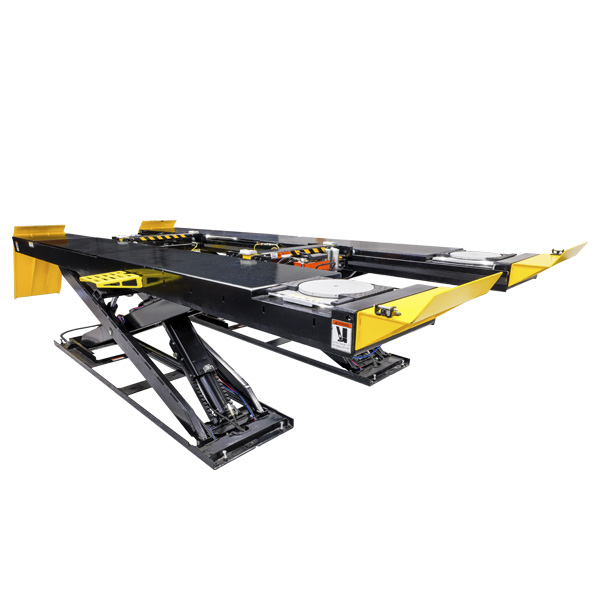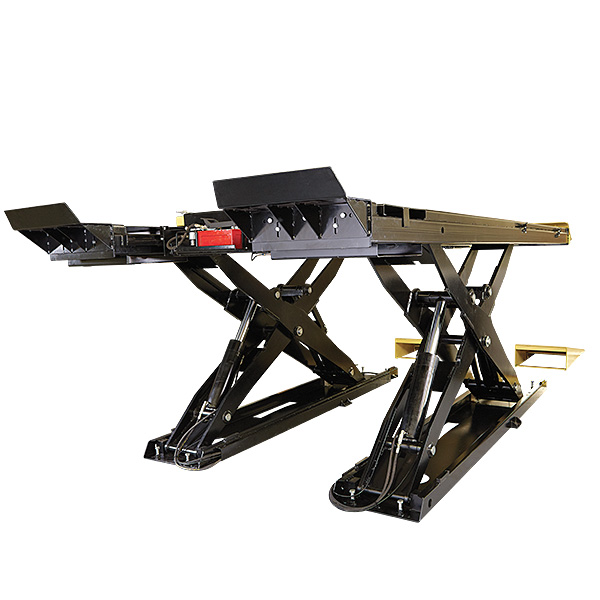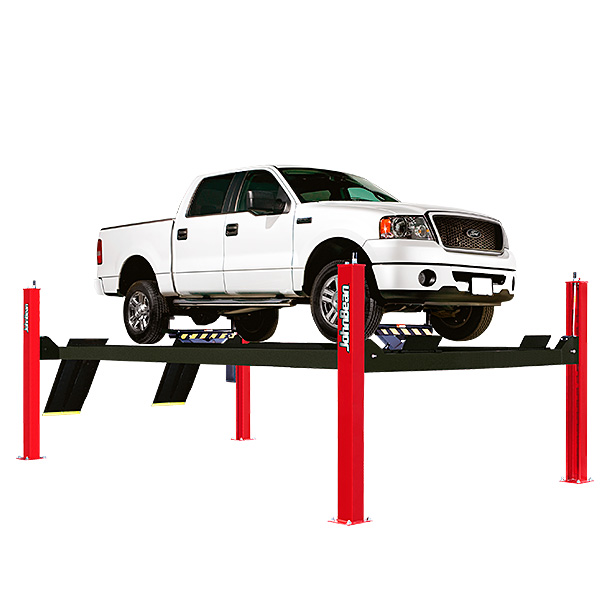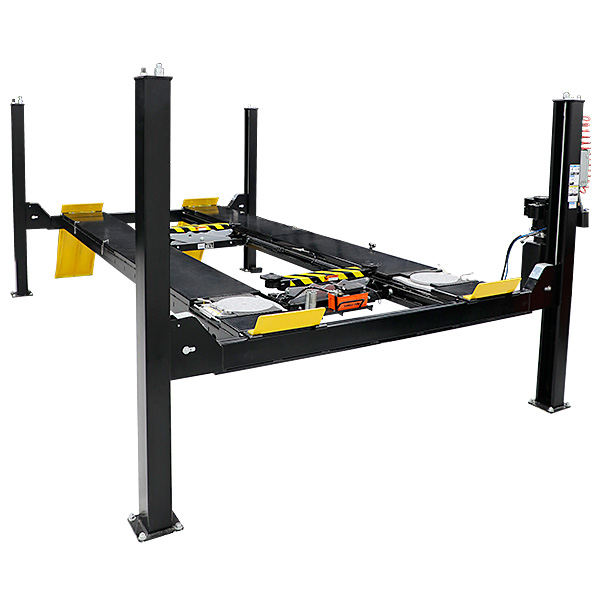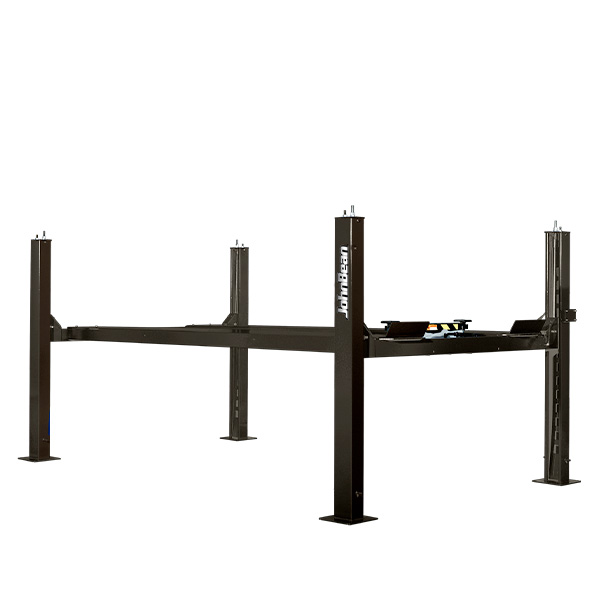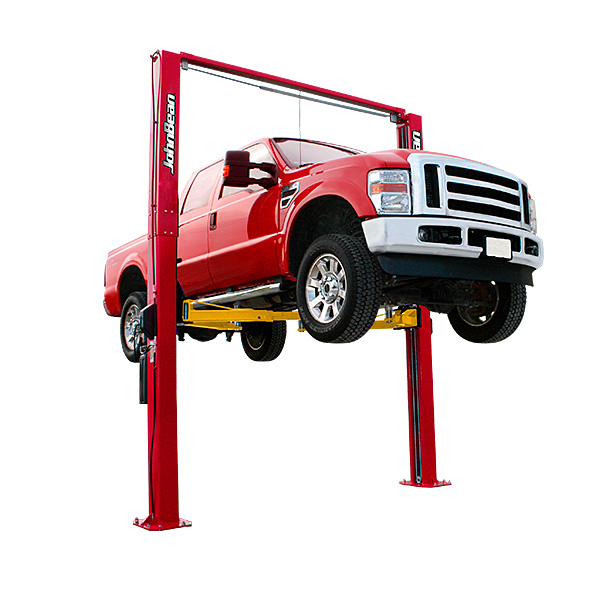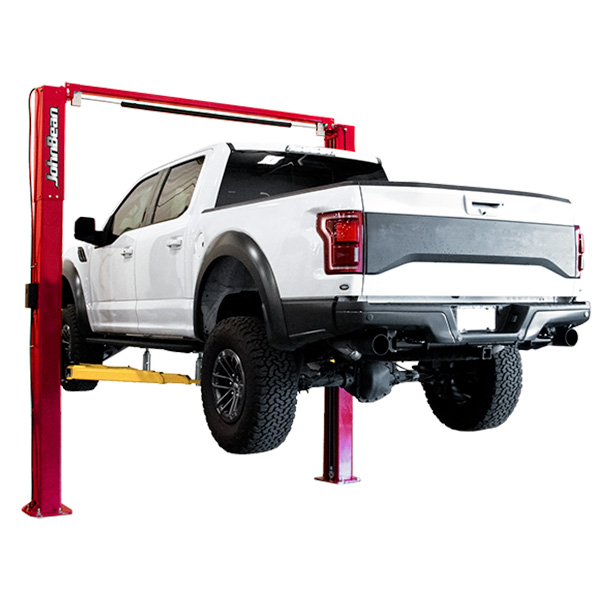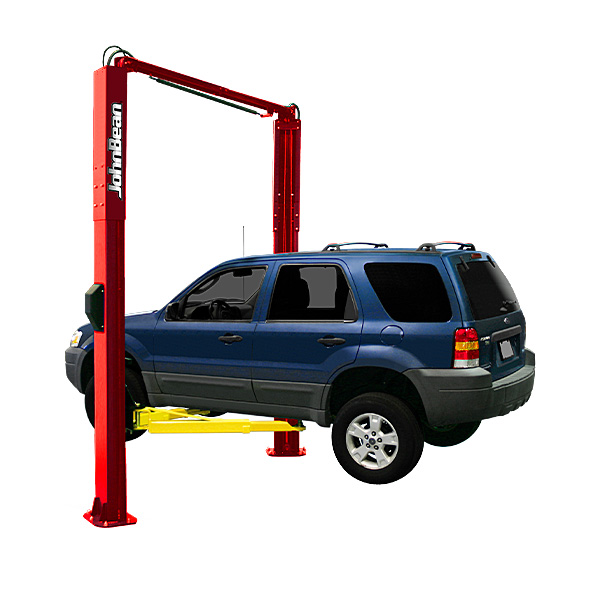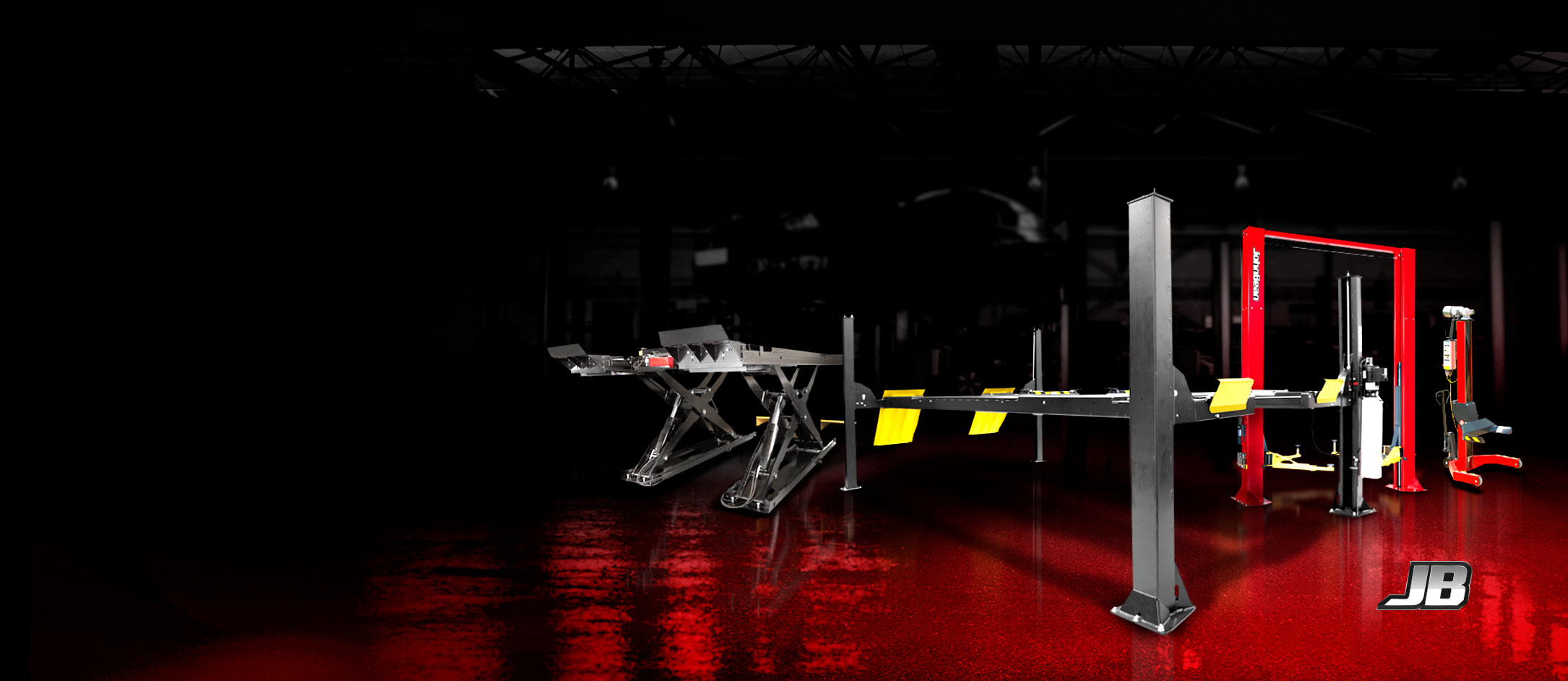
Auto Lifts
DURABILITY AND EASY OPERATION
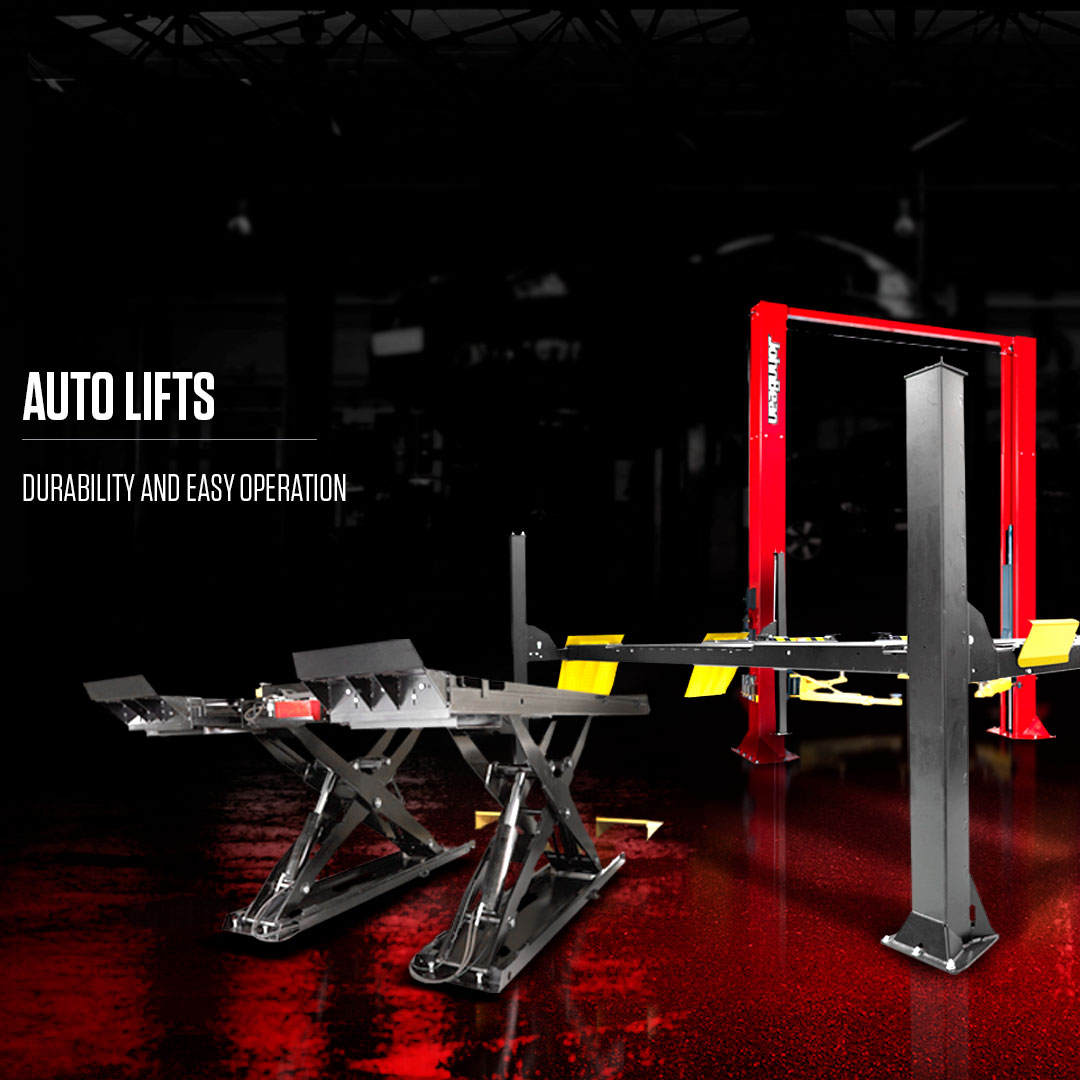
Heavy Lifting
Working on vehicles efficiently and safely is the core of running a successful automotive repair business.
To achieve this goal, professional shops need the heavy lifting capability of a quality automotive lift that will allow technicians to quickly perform crucial repair and
maintenance tasks with a high degree of safety.
Auto lifts also need to stand up to the rigors of daily usage and be constructed of quality materials that require minimal maintenance and less repair downtime.
Less Space / More Productivity
As an automotive professional, you know the challenges of keeping a shop running safely and efficiently all too well. John Bean® auto lifts help keep your workflow moving, prioritize operator safety, and are built to go the long haul.
Professional grade auto lifts should be easy to operate and allow technicians to quickly and safely get a car or truck off the ground to perform tasks such as alignment services or general repair and maintenance. Safety of the operator is paramount, and auto lifts should also have built-in features like a single-point safety lock to protect technicians. Auto lifts that are easy to maintain and constructed of quality materials ensure minimal downtime for your shop and years of reliable operation.
A Lift For Every Job
Depending on your shop’s needs, there are a variety of lifts that are specifically designed to help technicians get their work done efficiently and safely:
Two-Post Lift
For medium to high-volume general repair and maintenance shops, a two-post lift is a crucial part of your workflow. These workhorses use a pair of posts located at opposite sides of the vehicle and heavy-duty, placeable arms to hoist a vehicle into the air. Crucially, these lifts allow the MOST access to wheels, suspension, and the underside of vehicles while taking up less space than a four-post unit. Available symmetrical and asymmetrical lifting options provide versatility when spotting a vehicle’s pick up points.
Four-Post Lift
For high-volume tire and repair shops that offer alignment services, a four-post lift is a crucial part of this extremely precise process. These auto lifts use 4 columns to lift a vehicle and utilize a drive-on design, vs. heavy-duty arms to secure the vehicle during the lift. Due to their secure design, and built-in alignment productivity features, four-post lifts work in concert with wheel aligners to perform this profitable service with ease.
Mobile Column Lift
For commercial fleets, municipal vehicles, military vehicles, and other heavy-duty applications – the mobile column lift is a portable lift solution that is used in configurations of 2, 4, or 6 units to lift some serious loads. Available in wired and wireless models, these compact units utilize a technologically advanced suite of features such as self-leveling and electronic self-diagnostics to safely and securely raise large vehicles for service.
Scissor Lift
For professional repair shops that perform alignment services with limited shop space; compact flush-mounted scissor lifts are an attractive option for a variety of vehicle types. These space-saving vehicle lifts use a center support that fully collapses into the ground when not in use and allows for easy, unrestricted access around the vehicle during alignment services.
FAQs
You should consider the type of work your shop specializes in, the types of vehicles you regularly see come through your doors, your available floor space, your maximum lift height, and your overall budget.
Minimum Strength of Concrete: 3,500 P.S.I.
Minimum Aging of New Concrete Slab: 28 Days
Minimum Thickness of Concrete Slab:
8,500 lbs – 18,000 lbs lift: 4″ Minimum Thickness
18,000 lbs – 100,000 lbs lift: 6″ Minimum Thickness
In order to verify the safety of an automotive lift, professional-grade auto lifts should comply with strict standards. ANSI (American National Standards Institute) is a private, non-profit organization that administers and coordinates standards for automotive equipment like auto lifts. Auto lifts must meet the ANSI/ALI ALCTV-2017 standard.
Scissor lifts take up much less room in a shop than a four-post lift, while simultaneously offering a similar range of lift capacity. When not in use, they completely fold into the floor.
Scissor lifts are best used for alignment services since the wheels of the car or truck are “wheel engaged” on the lift itself, which is crucial to this precise procedure. Due to their compact size, these are great for smaller garage spaces.
Four-post lifts are best used for alignment and service procedures that require heavy duty lifting capacity where shop space is not as much of a concern.
Asymmetric lifting centers the vehicle towards the REAR of 2 rotated columns, while symmetric lifting CENTERS the vehicle between the 2 center-positioned columns. Asymmetric lifting allows maximum door opening and interior access but it is not suitable for larger, heavier types of vehicles due to lifting limitations.
No, you will need to hire a qualified general contractor to install your auto lift in your shop or garage.
Yearly inspections by a third party inspector are part of a thorough maintenance routine for most garage equipment. Every type of auto lift, no matter the design, requires regular maintenance to keep it operating at peak efficiency.

